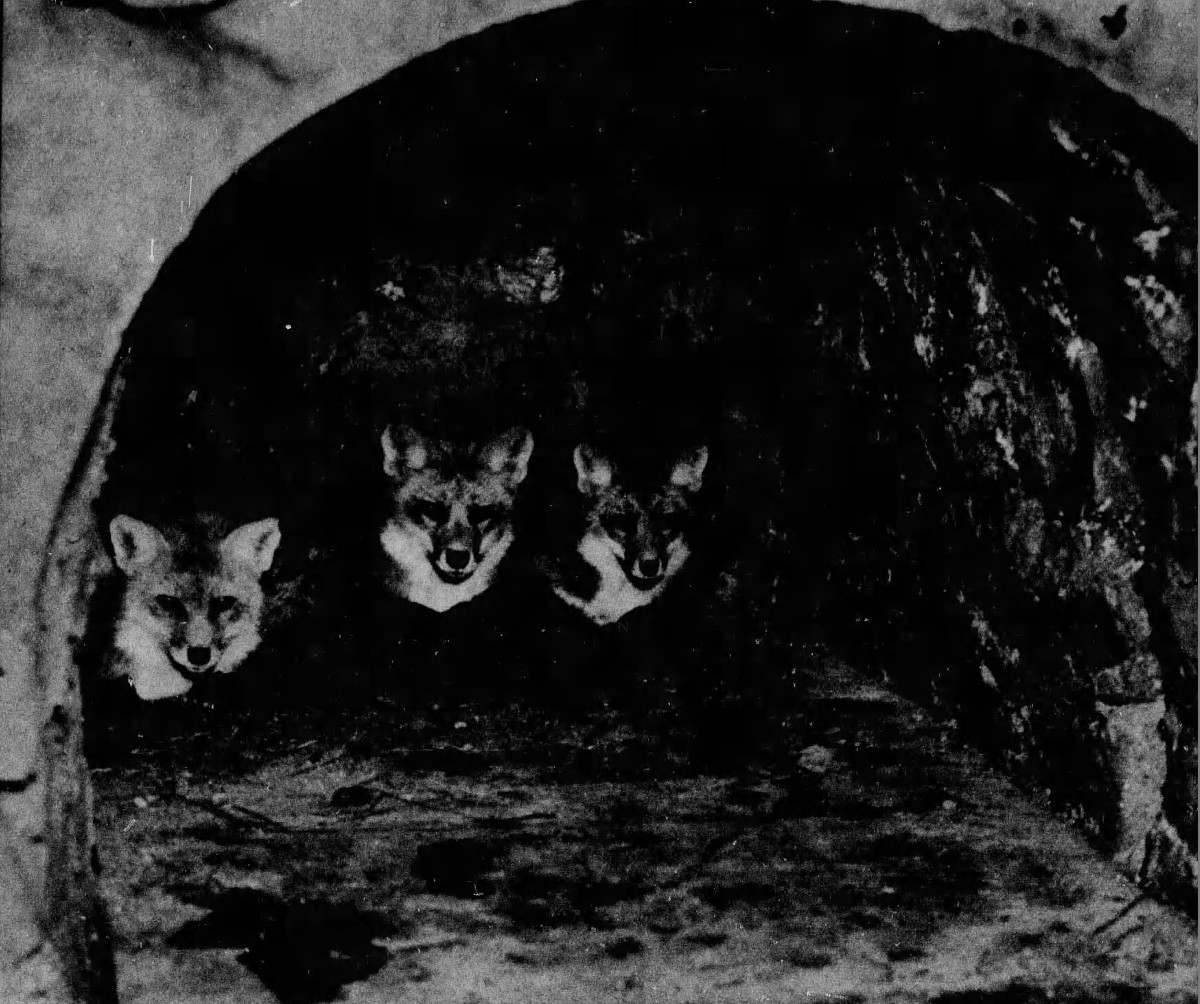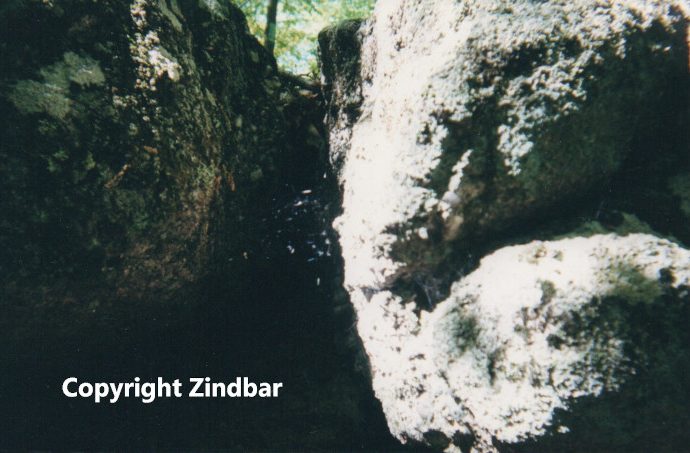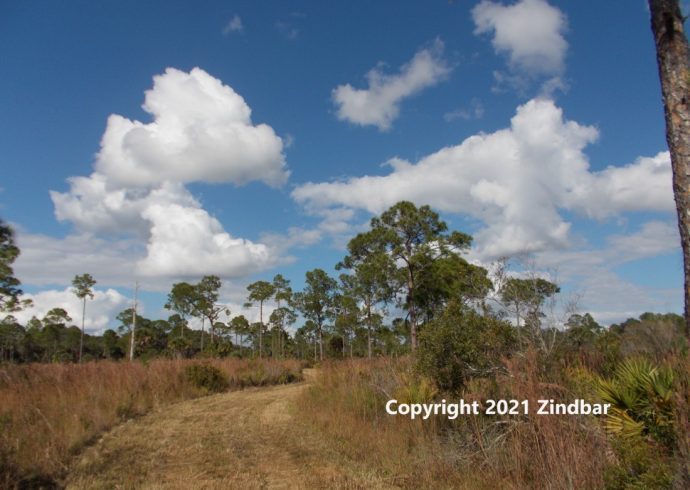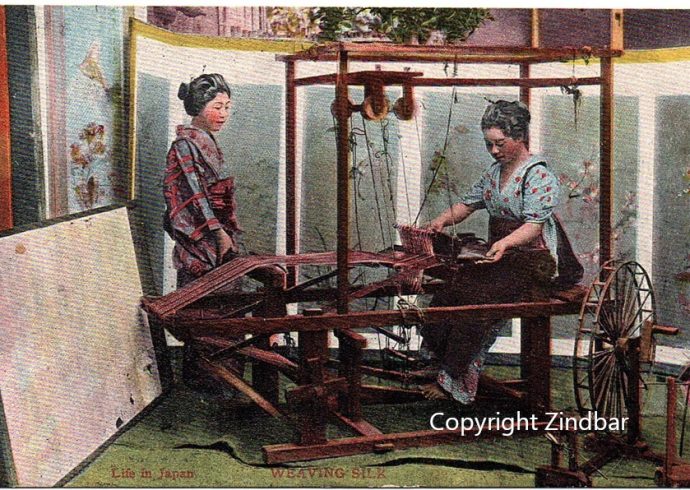
Tucked away behind a primitive looking structure built in 1934 by members of the Civilian Conservation Corps on the northeast intersection of Rt 6 and New Britain Avenue in Farmington, Connecticut is a forlorn nature sanctuary that once housed a number of wild animals during the 1930’s. Known locally as “The Abandoned Zoo”, the 500-acre Shade Swamp Sanctuary was started by the Connecticut Department of Fish and Game in 1933 as a wildlife rehab center. To that end, steel animal cages were built in varying sizes to create homes for these woodland creatures: bobcats, fox, opossum, deer, skunk, muskrat, raccoons, horned owls, rabbits, porcupines, quail, pheasants, beaver, mink – all animals normally seen in wooded areas of the state. Such a “zoo” certainly seems peculiar, especially for persons who lived in rural areas outside of the cities. Why were such common, ordinary, everyday animals collected and housed in cages, separate from the rehabilitation section?
Much of it had to do with the land the sanctuary resided upon; it was certainly conducive to the area, situated near a lake and swamplands. The other reason was the location. Route 6 was the main highway that stretched across Connecticut (116 miles) and across the nation; before 1964, it was the longest highway in the nation. Anyone traveling through the state could very easily stop by this somewhat unusual roadside attraction, much the same way other states had their share of attractions for people headed for another destination.
What did Shade Swamp Sanctuary look like during the height of its popularity? As a visitor entered the property, the parking lot was on the left, medium in size and not equipped to deal with large numbers of visitors during the summer season, the time of year when the sanctuary was busiest. At the corner of the parking lot and driveway was a yellow house where the caretaker lived. Across from the yellow house on the other side of the driveway were rearing fields for quail and pheasant. A bulletin board shelter in the style of those found in many parks and preserves contained general information about the different animals who lived there, plus fruit bearing trees grown to feed them. A chicken yard was situated near the back of the zoo, a deer yard was in the center, as well as a shelter built for them. By 1933, plans to expand the park included pens for opossums, bobcats, both gray and red fox, skunk, muskrat, mink, and beaver. Both raccoons and rabbits were bred, and a nature trail led to more exhibits. These exhibits were mainly for different varieties of ducks, hawks and owls. One special favorite animal was a raven named Peter, who had a personality that made visitors and sanctuary employees fond of him.

A special arrangement of electric lights was assembled to simulate natural light, thereby prompting the different animals to breed outside of the normal reproduction times of the year. According to an article in The Hartford Courant, December 6, 1936, pheasants were induced to reproduce as young as seven months old, compared to the normal breeding age of one year. During the summer, the sanctuary would have as many as 3000 visitors, and, long before modern visitor regulations, people would feed the animals items they should not be given: cake, donuts, cigarettes, and chewing gum. In 1936 a visitor made the grave mistake of giving a young fawn a piece of chewy candy or gum, and consequently, the poor animal died the following day. One of the sanctuary workers, Albert G. Csech, posted multiple signs stating “Do not feed the animals” all over the property in clear view for visitors to see in order to prevent any further animal deaths.
It goes without saying that Shade Swamp Sanctuary has received offers of many other animals, such as monkeys, alligators, parrots, cinnamon bears, even a giraffe, and of course the sanctuary had to decline, considering they did not have the ideal conditions for such animals, especially alligators, usually native to states like Louisiana and Florida.
Shade Swamp Sanctuary provided the ideal setting for many local nature interest clubs, such as the Hartford Bird Study Club. School classes would go to this wildlife zoo on field trips. In 1933, Shade Swamp Sanctuary faced the threat of being shut down due to the lack of funds. One of the reasons the zoo experienced funding issues was the lack of facilities meant to handle large crowds, which otherwise would have provided the required funds to keep the center going. It was evaluated that the Civilian Conservation Corps would help build more animal cages in addition to one nature trail they completed, as well as help continue to build more trails at the center. In many ways this nature center provided educational information to visitors, establishing its importance in the region, as there were no other similar wildlife sanctuaries nearby. One of the more pressing issues was in providing protection for the inhabitants of this zoo during the cold New England winters. In nature, wild animals are perfectly capable of surviving harsh winters in their homes; being in an animal cage year round was an entirely different story. Eventually, the sanctuary was able to acquire the necessary funds to remain open for the next three decades, into the early 1960’s. In 1939, however, the State Board of Fisheries and Game was forced to temporarily close the sanctuary due to economic reasons. Many of the exhibit animals residing there were sold to new homes while others such as the birds, were released back into the wild. The only animals remaining were those in rehabilitation. In 1963 John L. Emery, a Farmington writer, wrote a guidebook about Shade Swamp Sanctuary and what it had to offer the visitor. By the mid-1960’s, the remaining animals were gone, and the property was reduced to being a park where organizations such as the local garden club could meet and take part in nature workshops.
Nowadays the sanctuary is a nature trail, the old animal cages are still there for visitors to see and wonder what Shade Swamp was like during its heyday.
Image Credit: The Hartford Courant, December 6, 1936. Newspapers.com.


